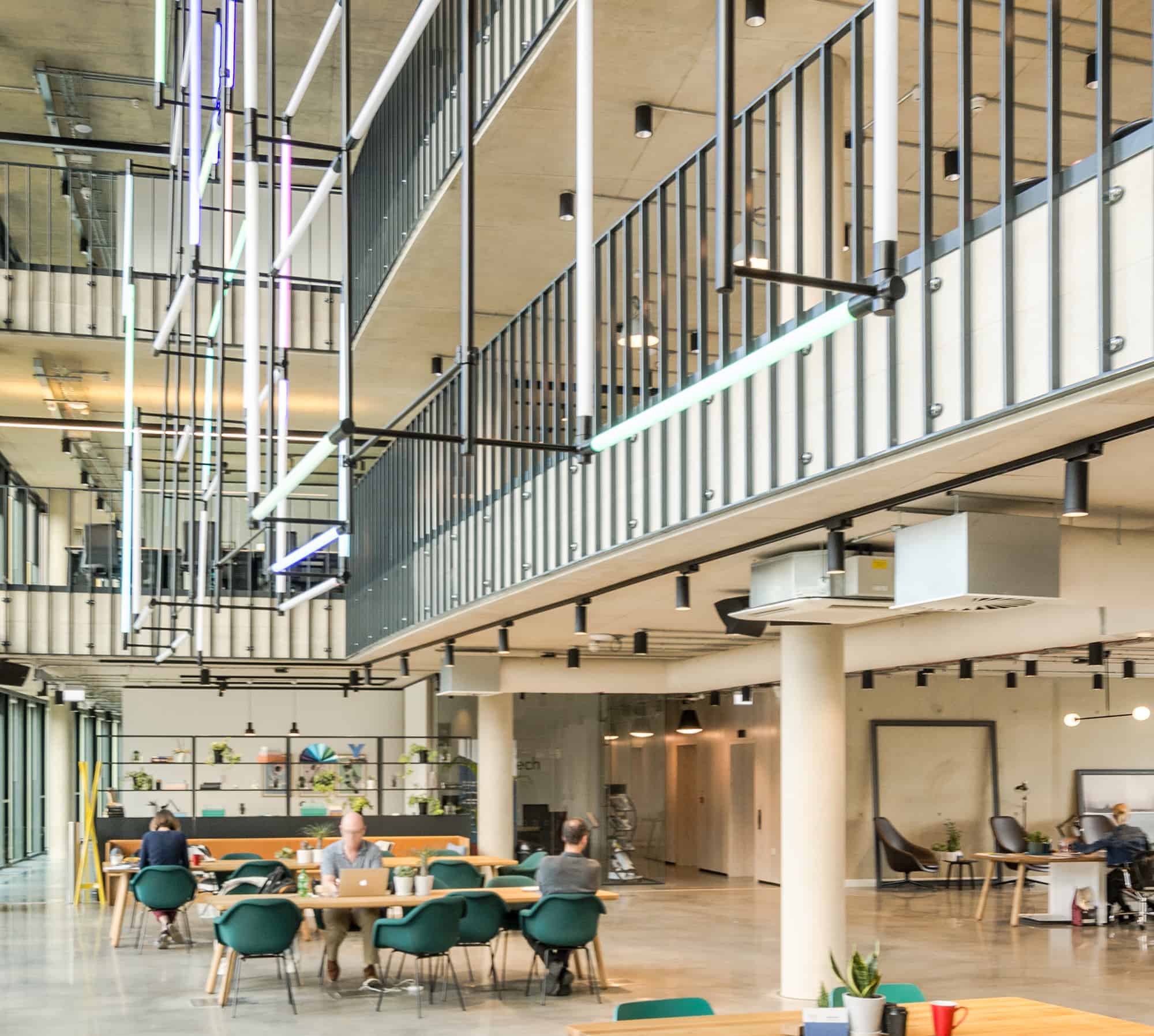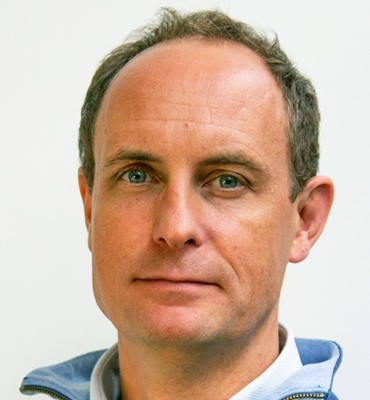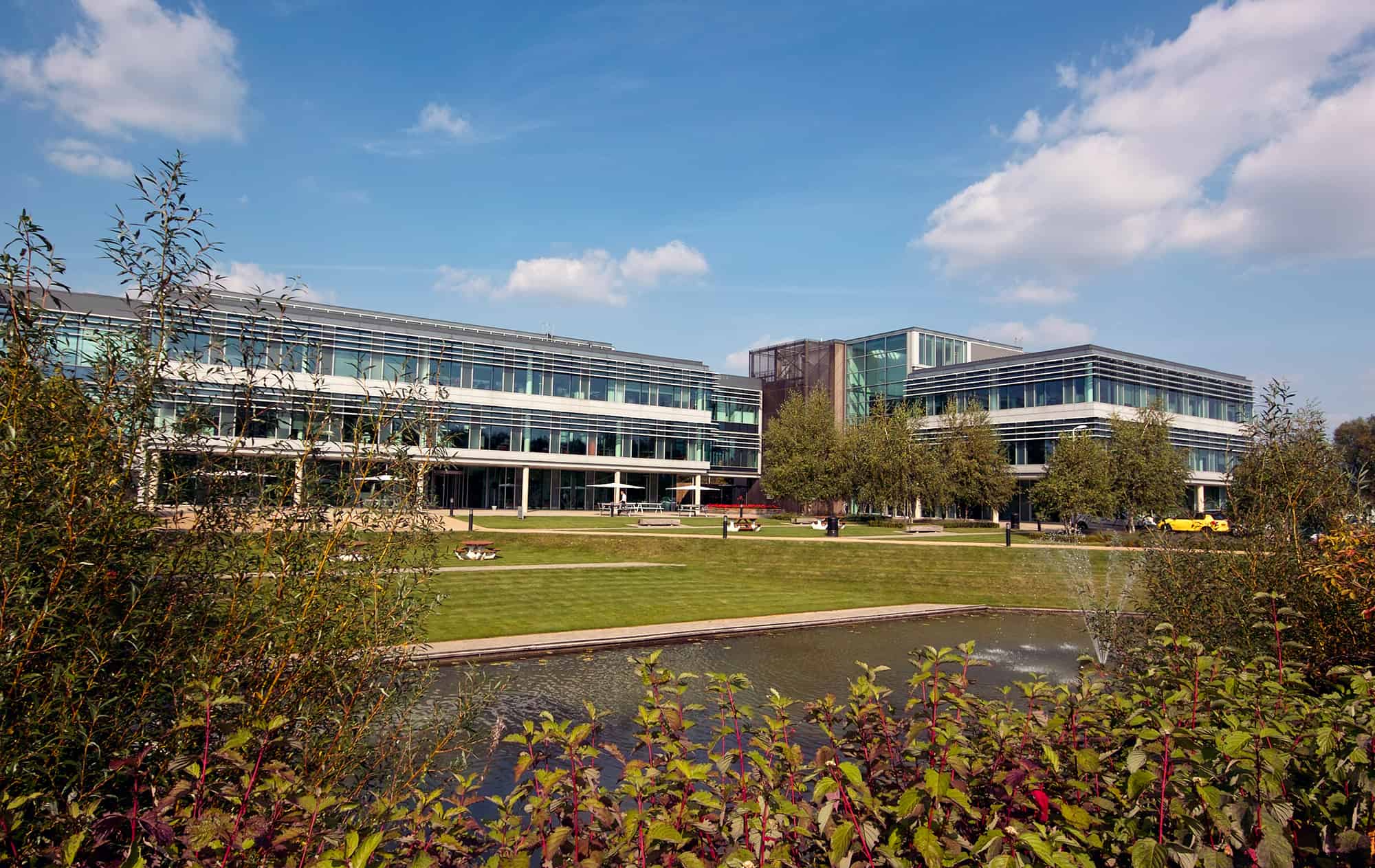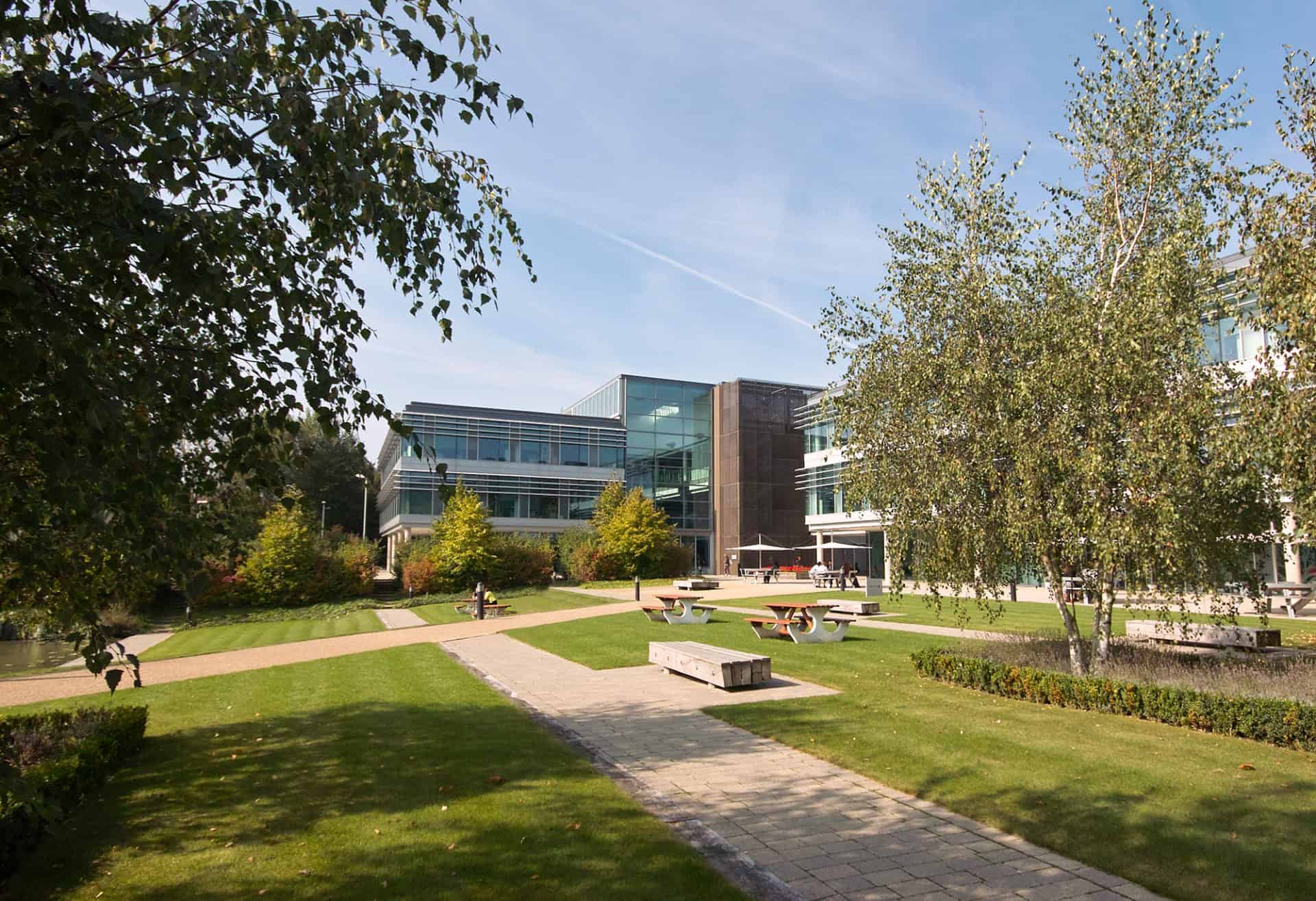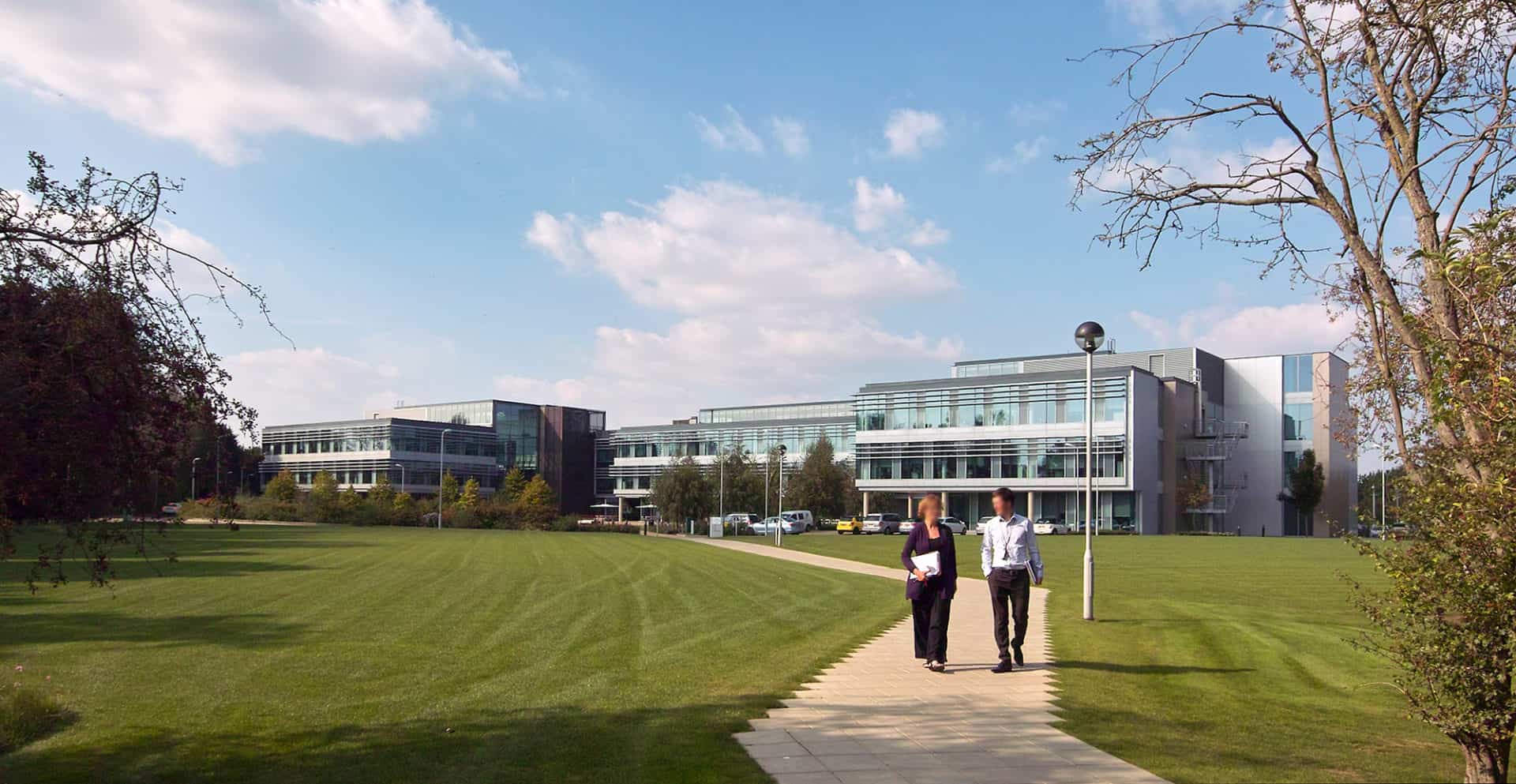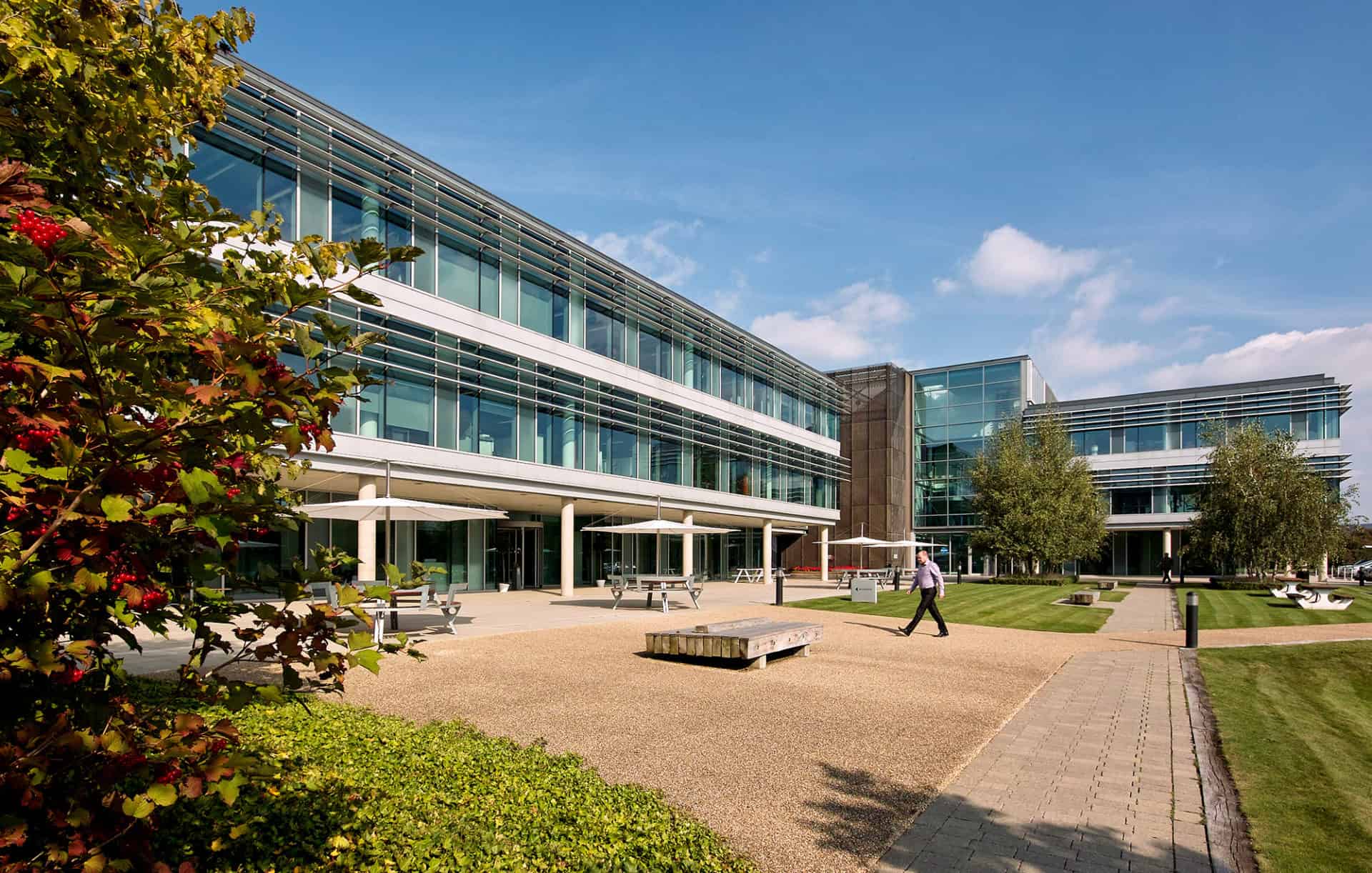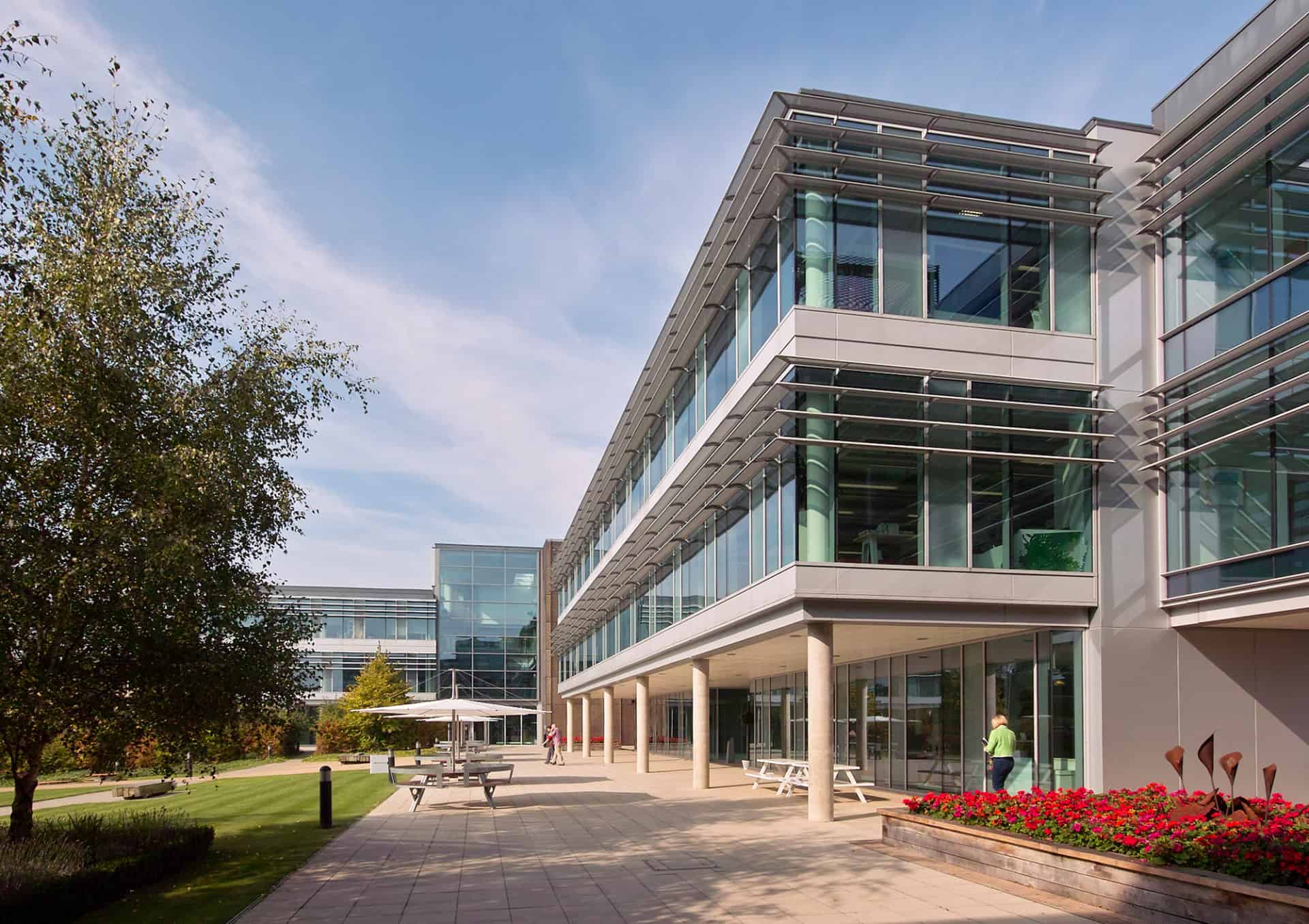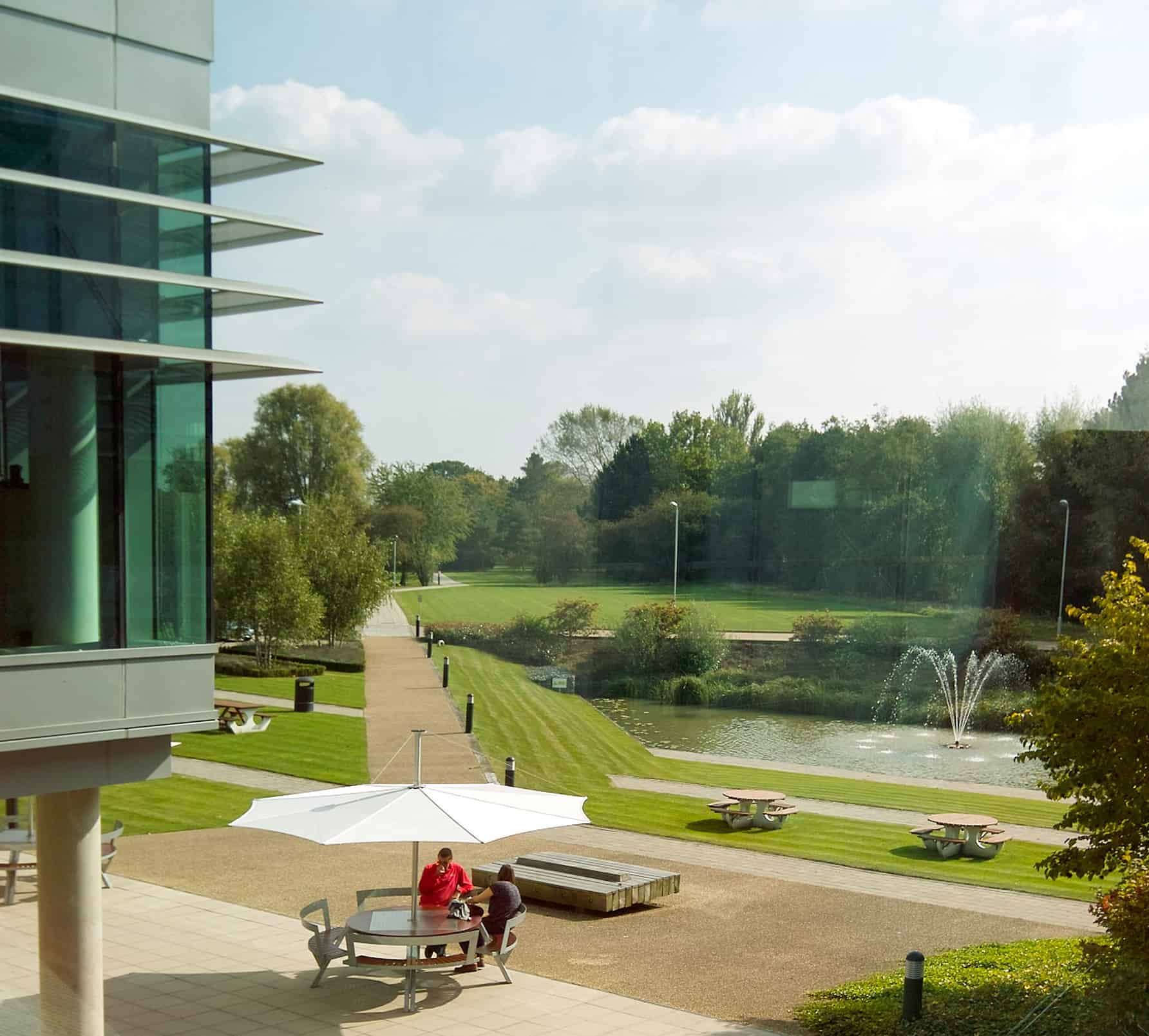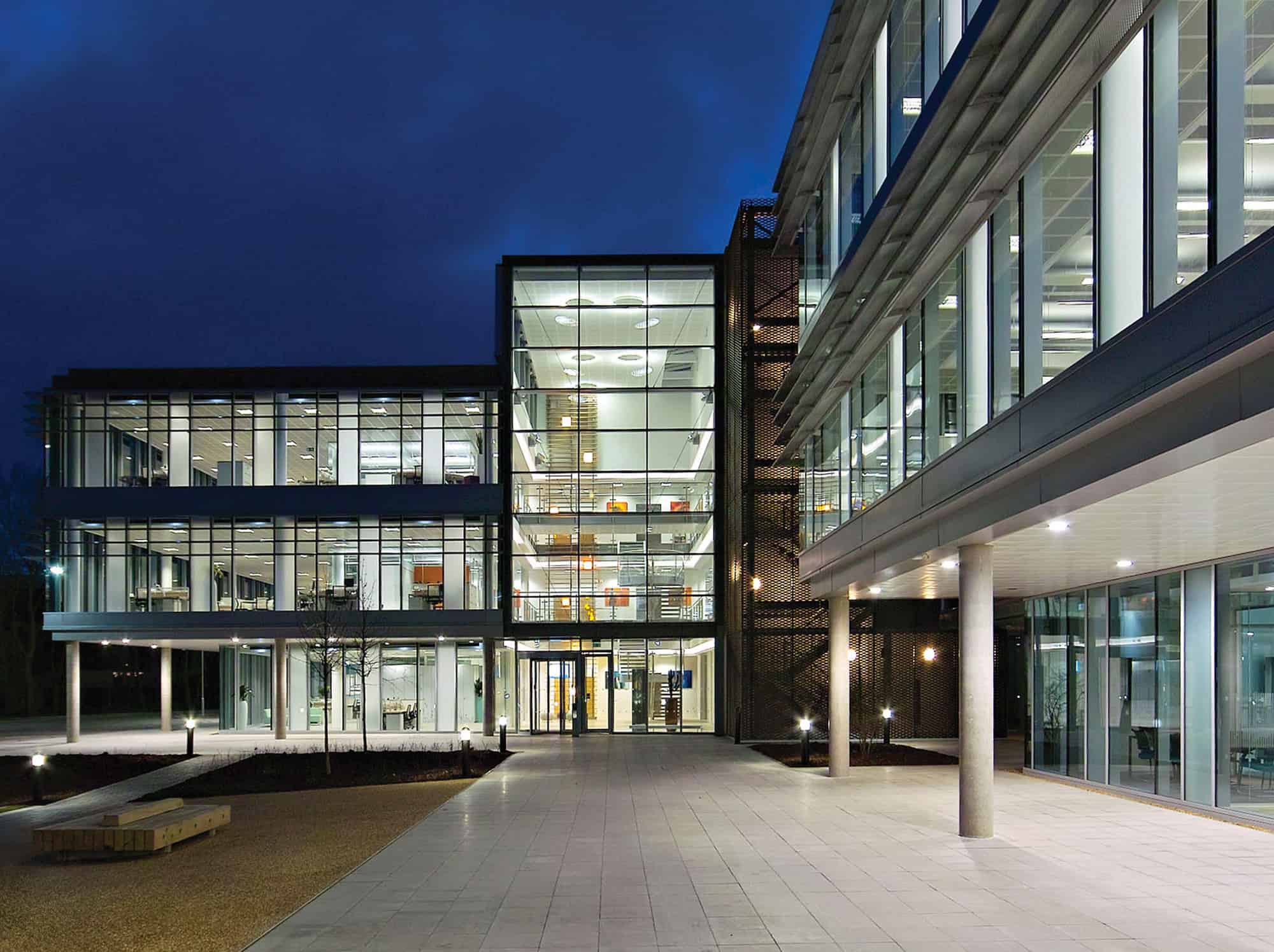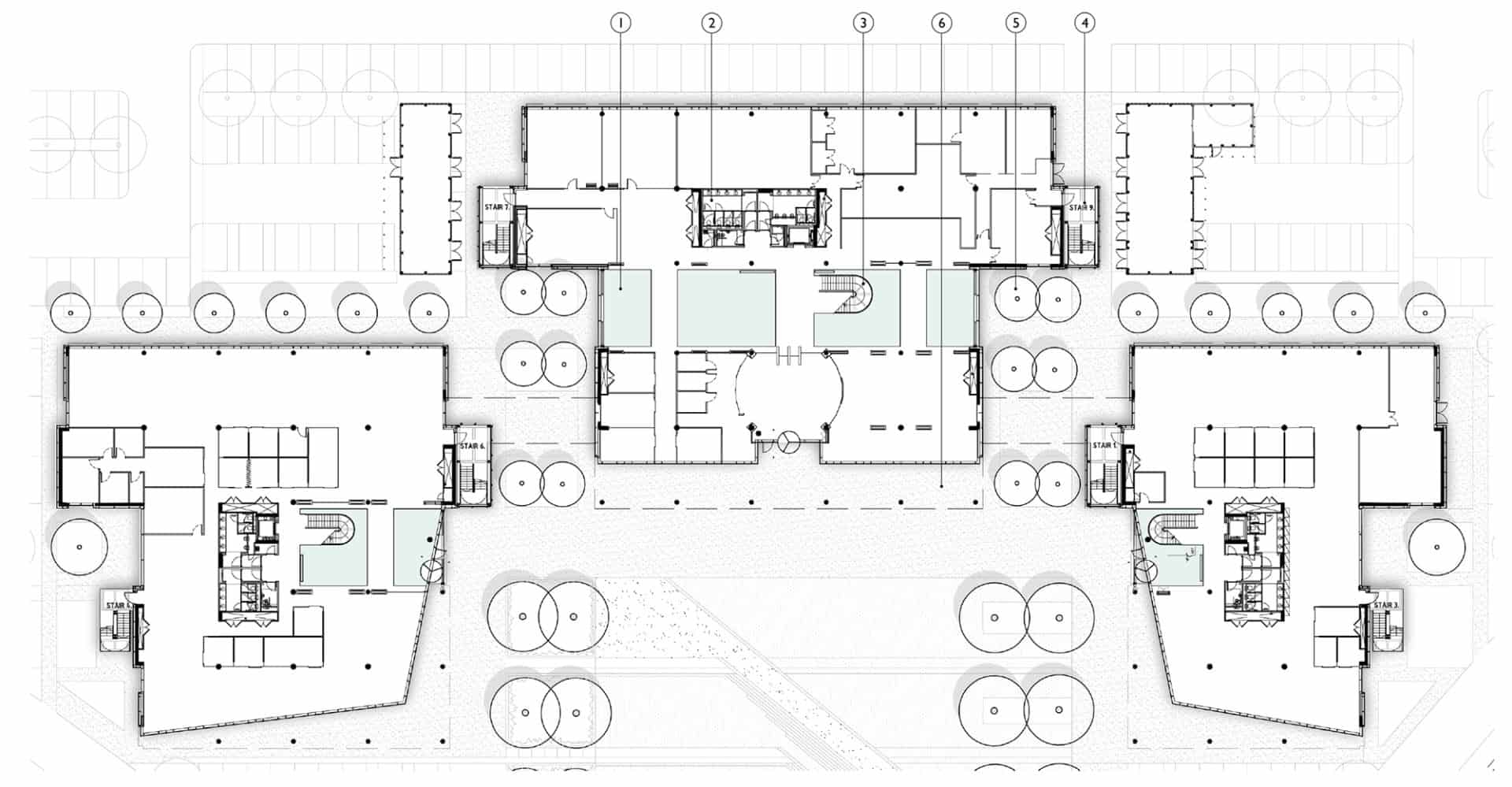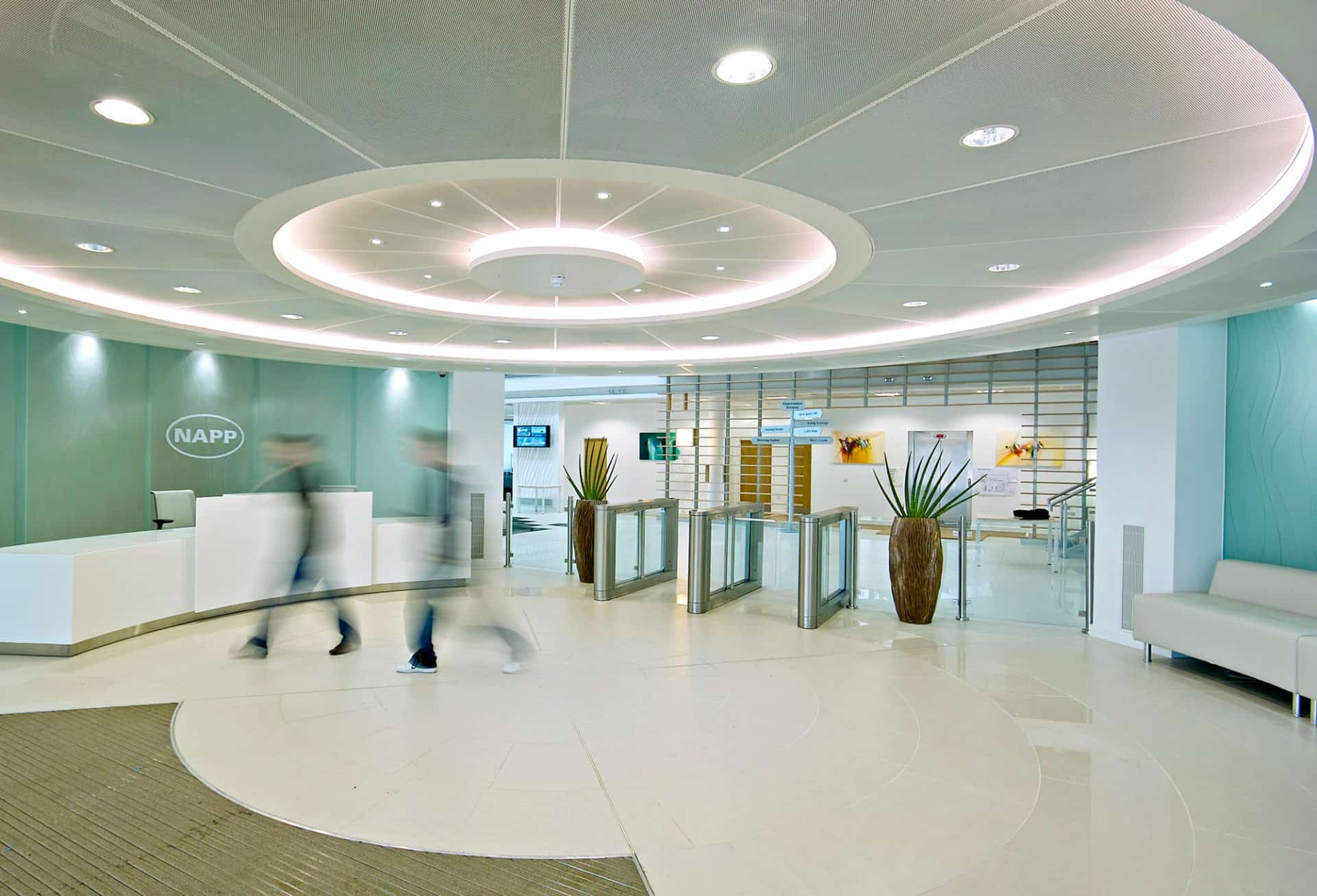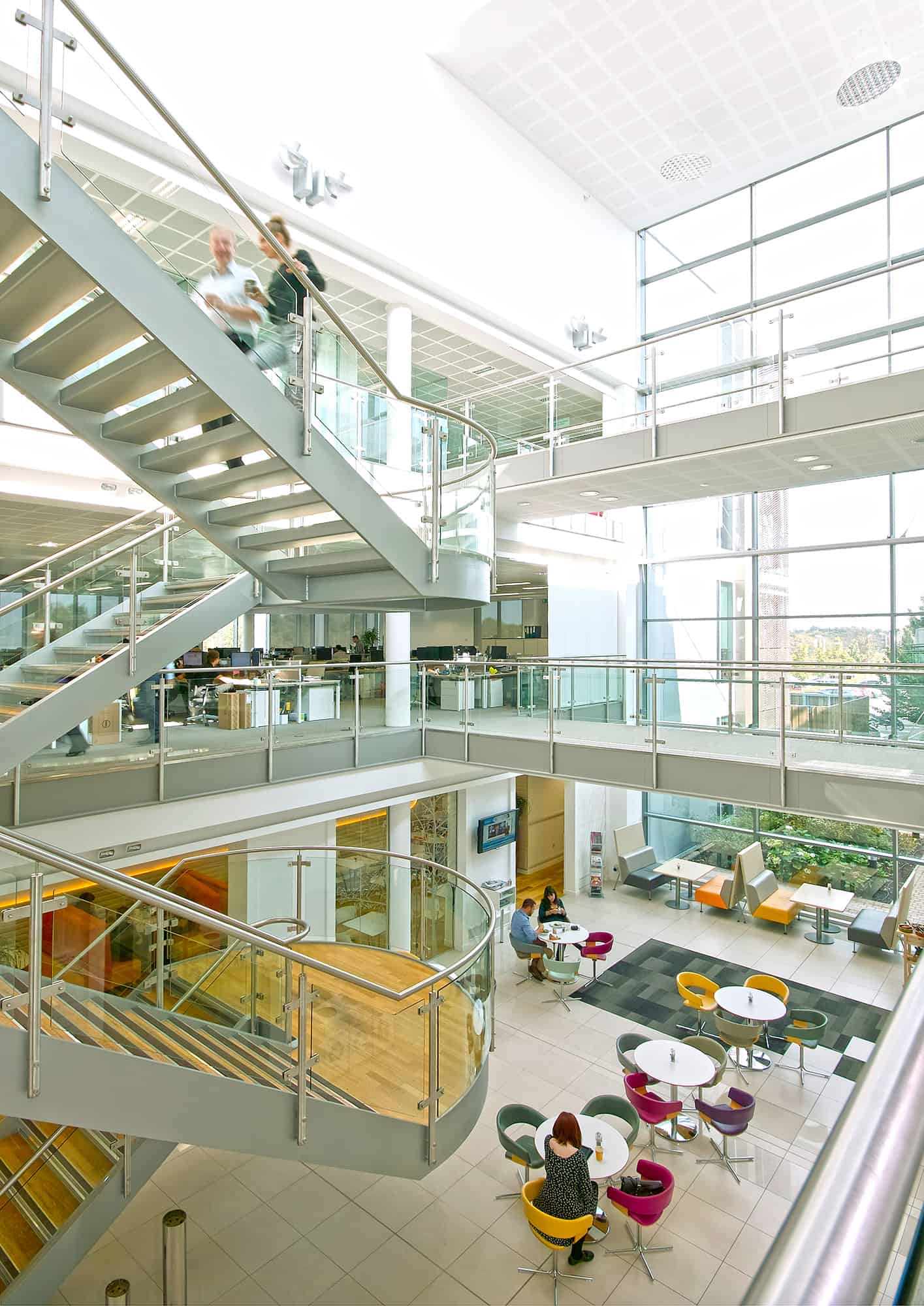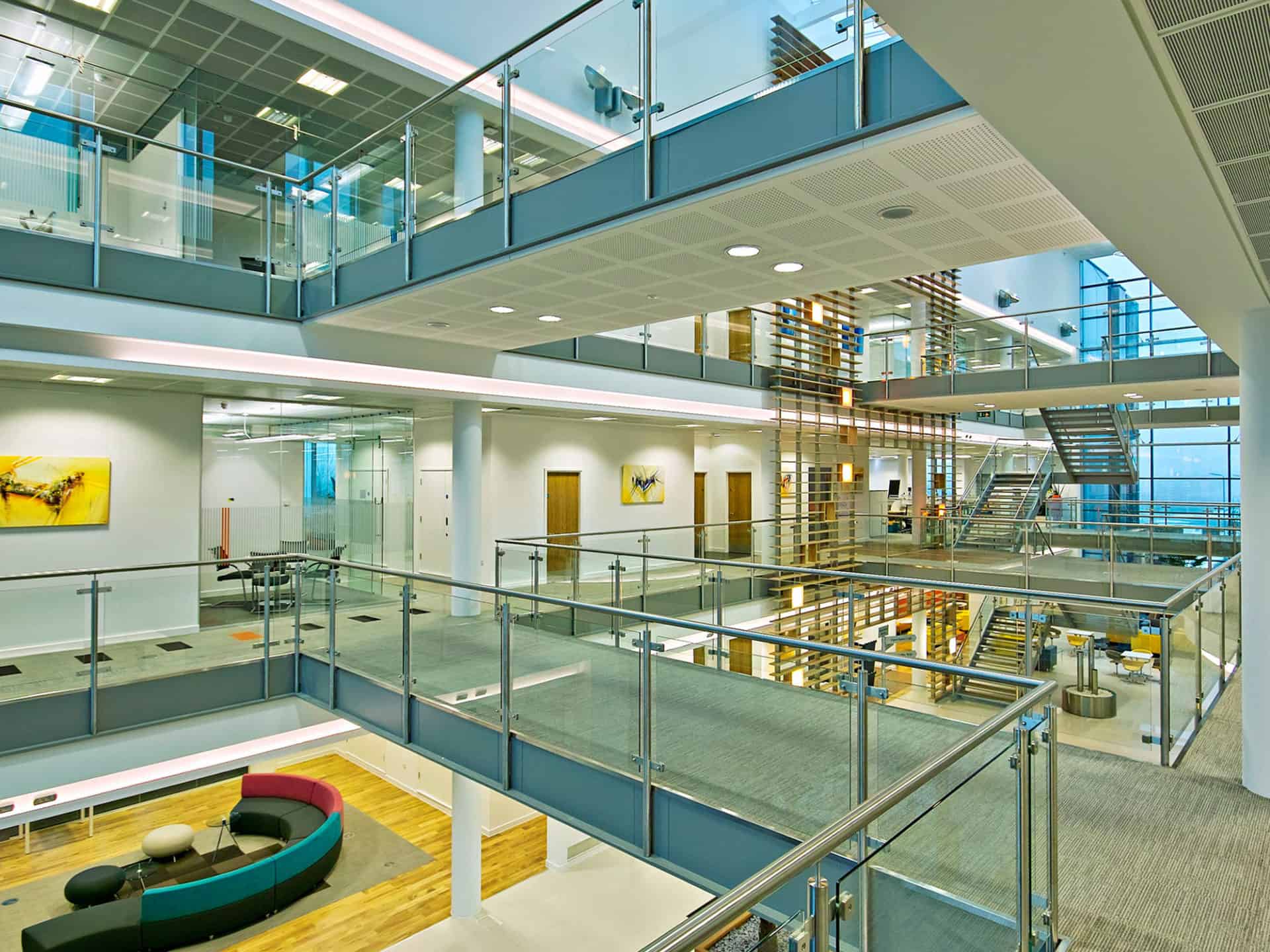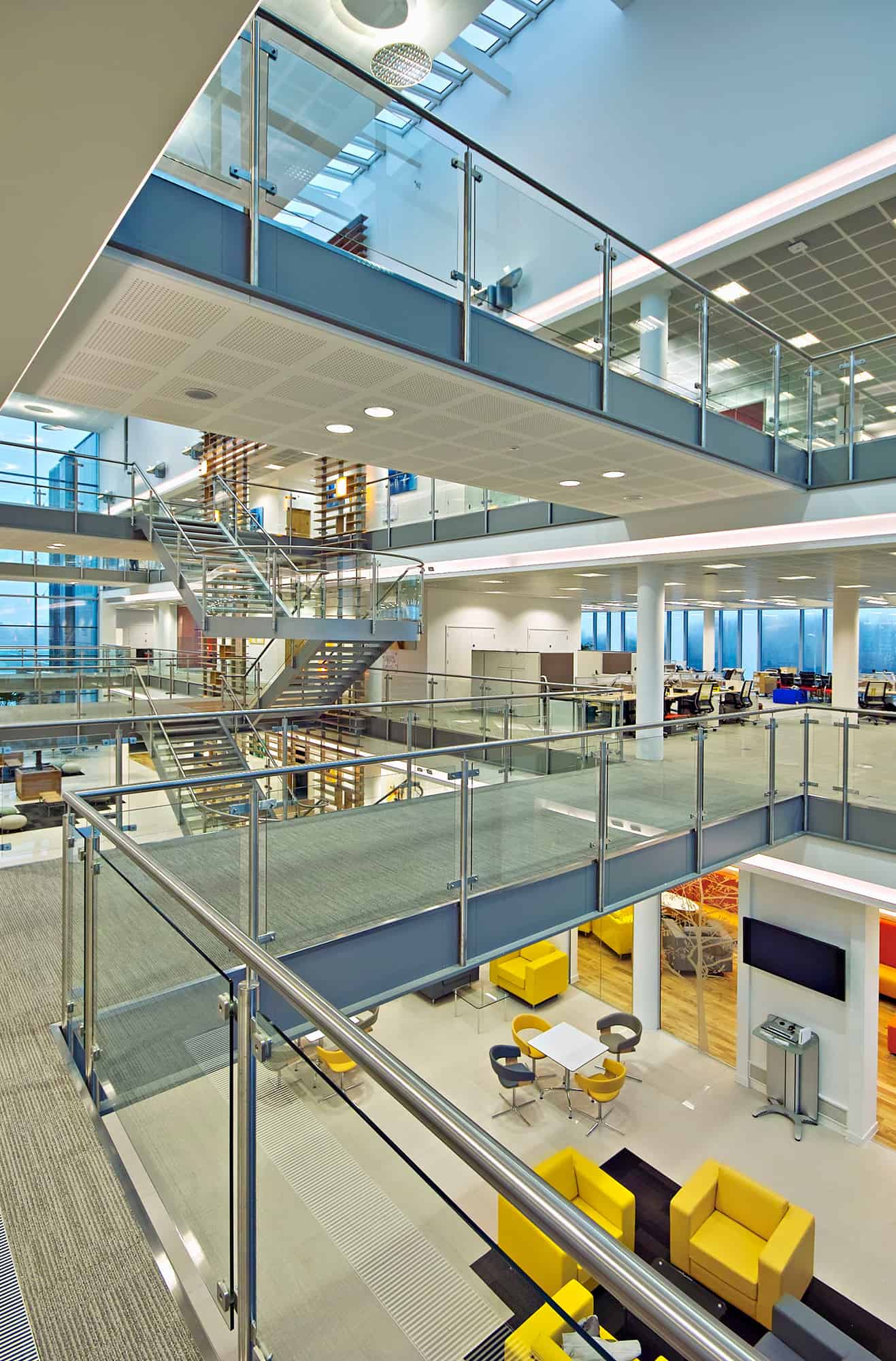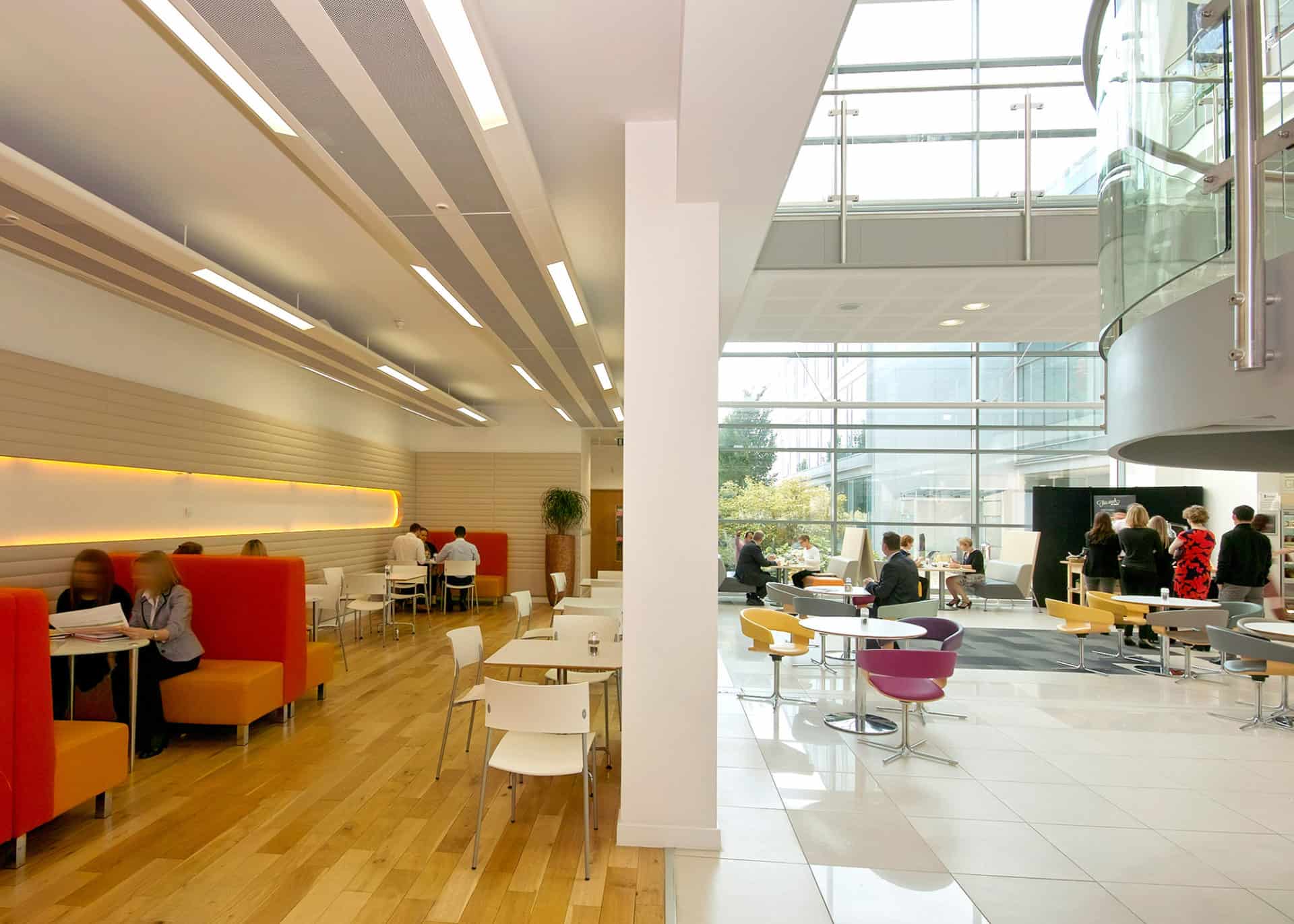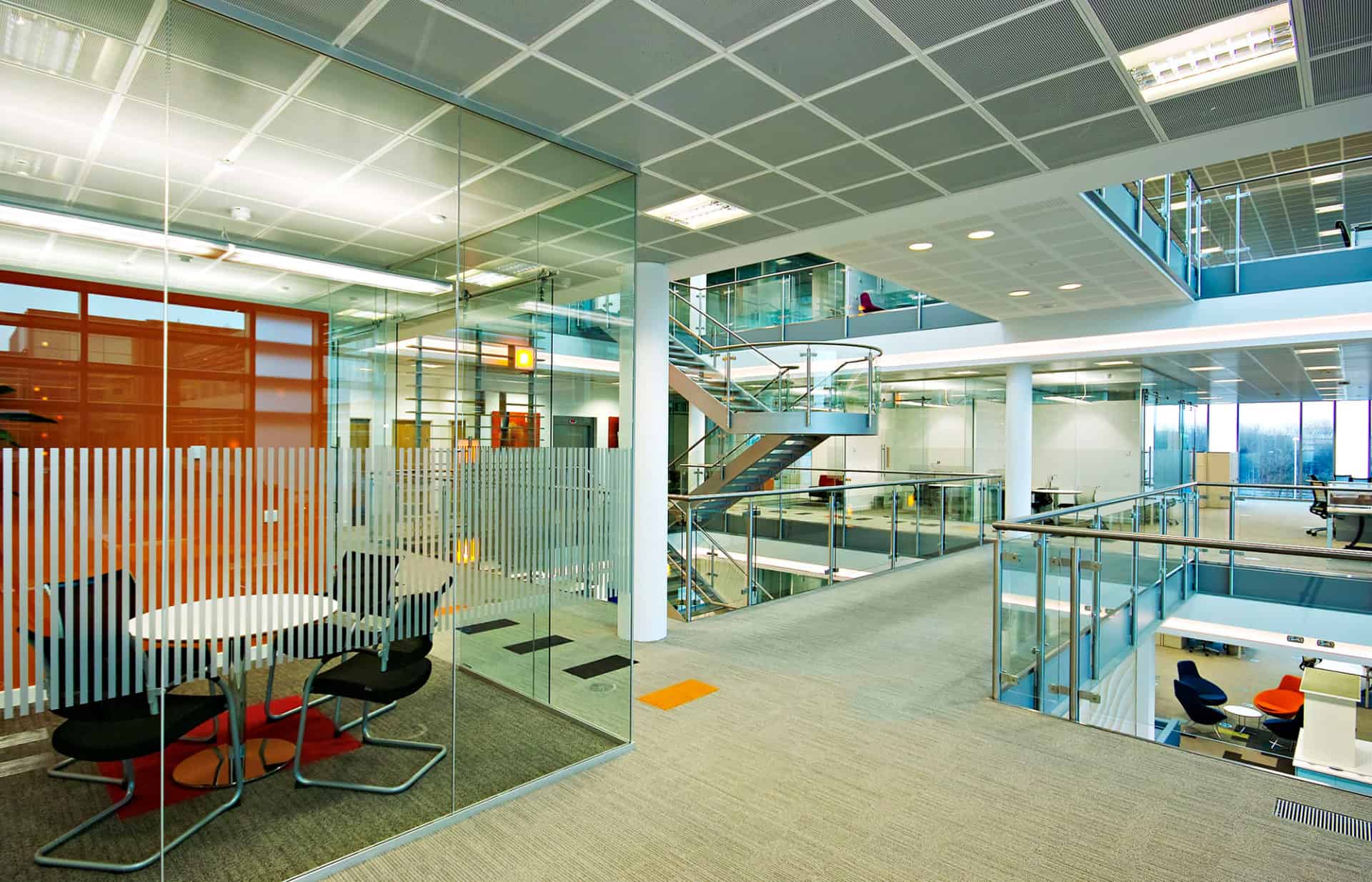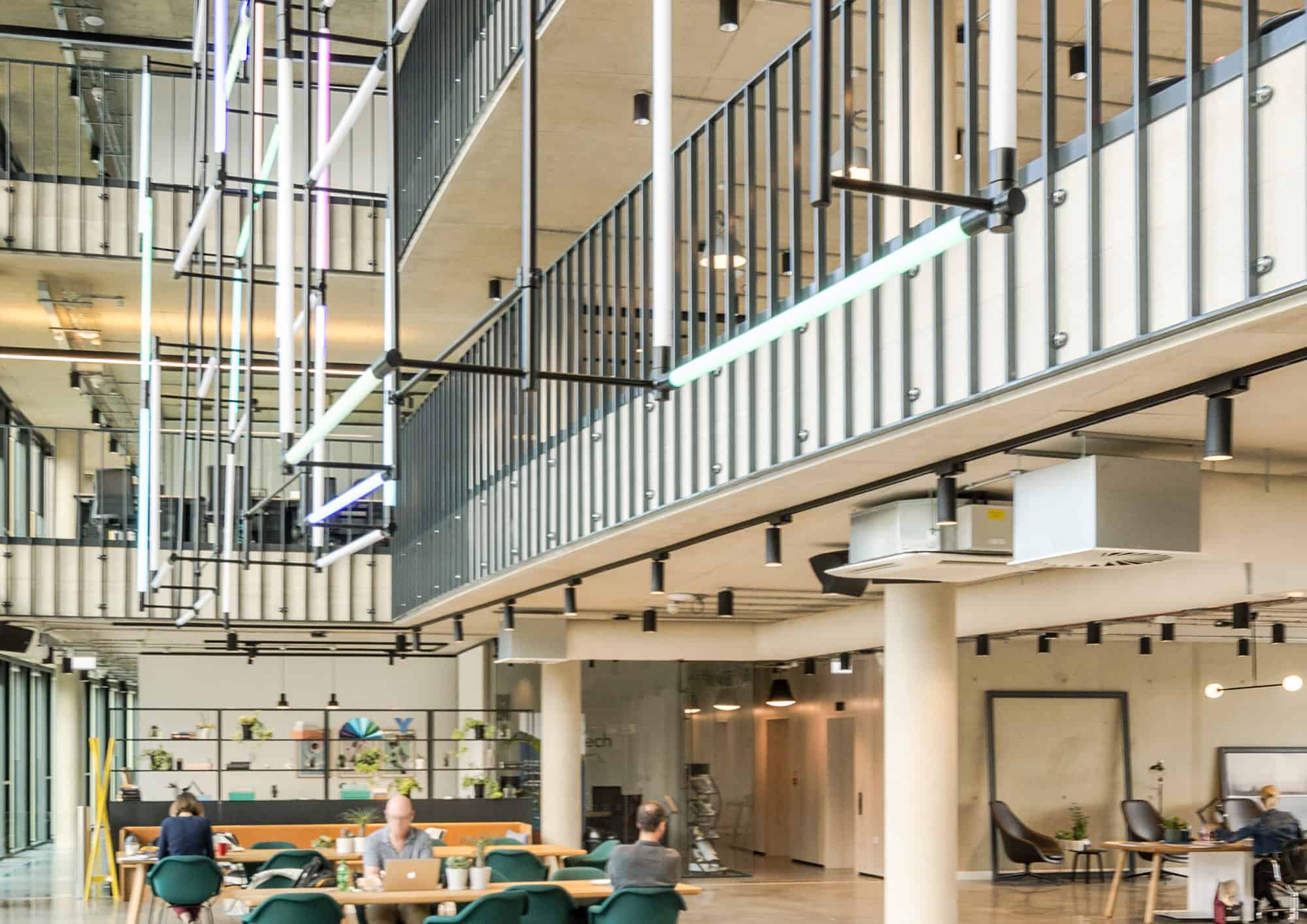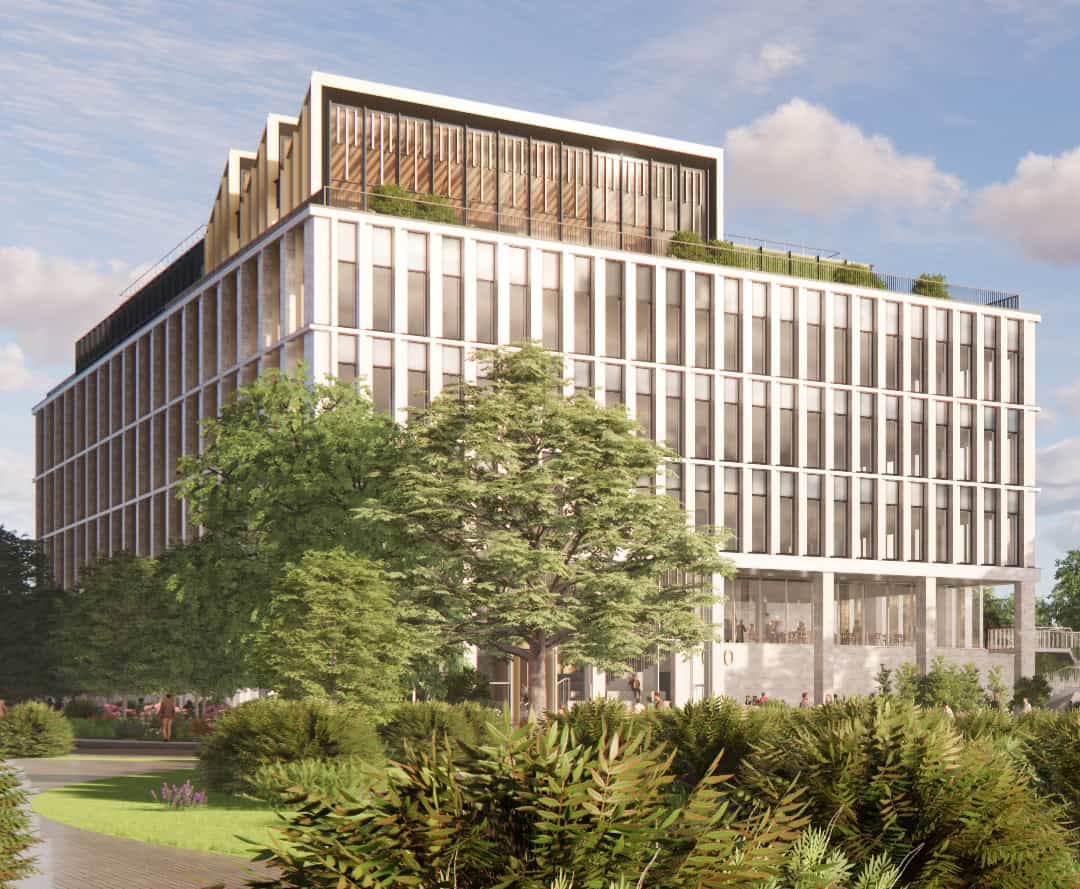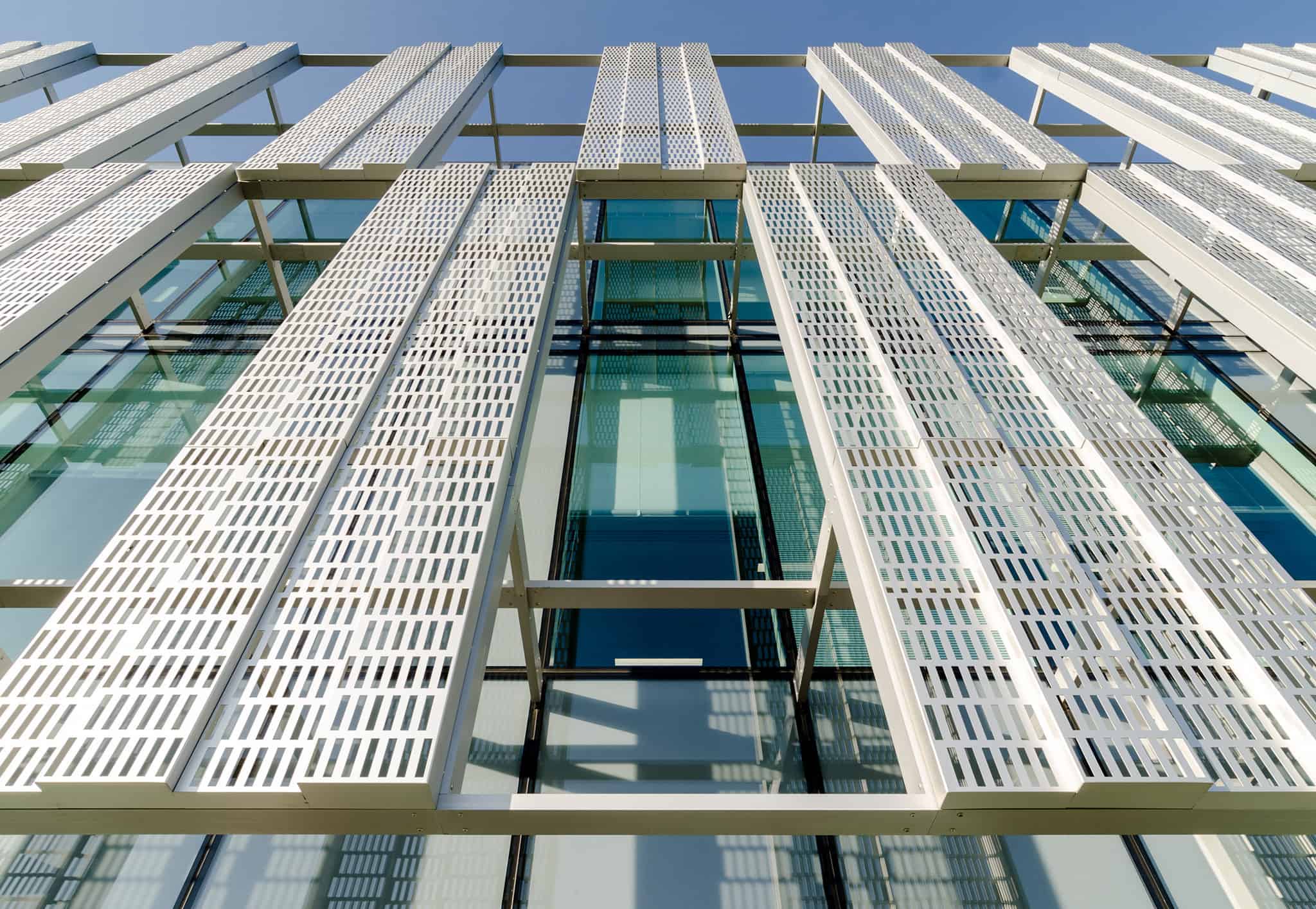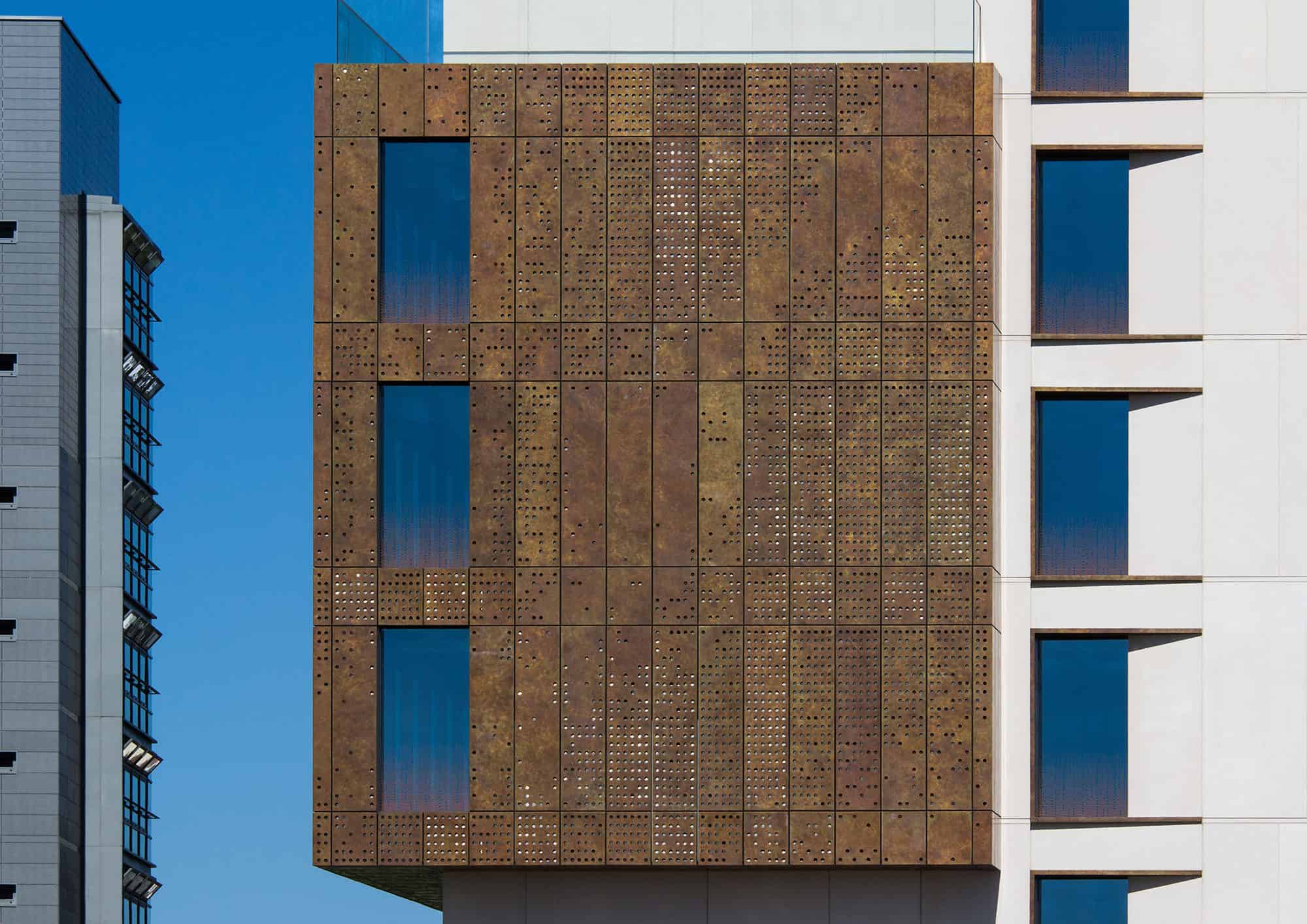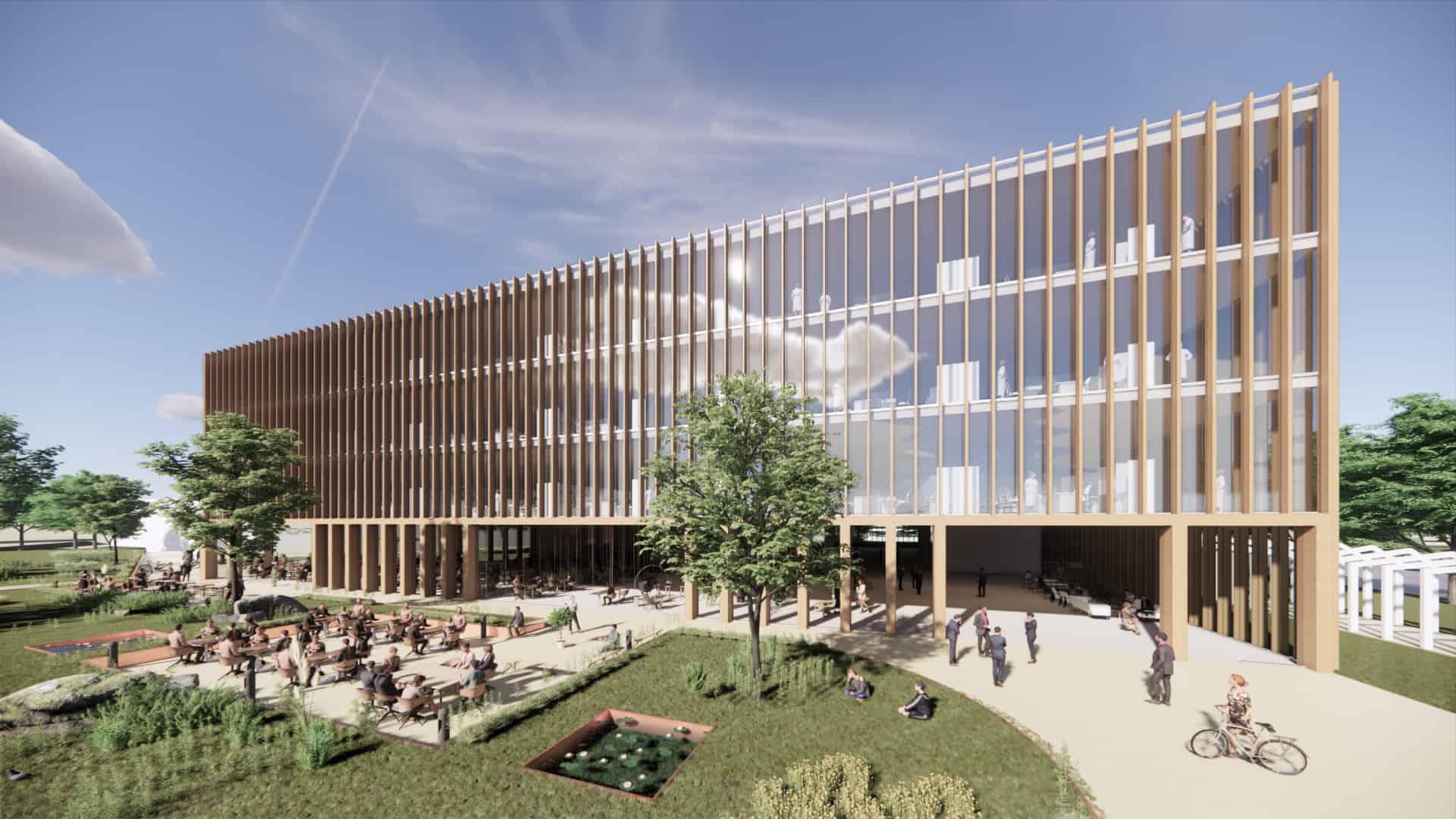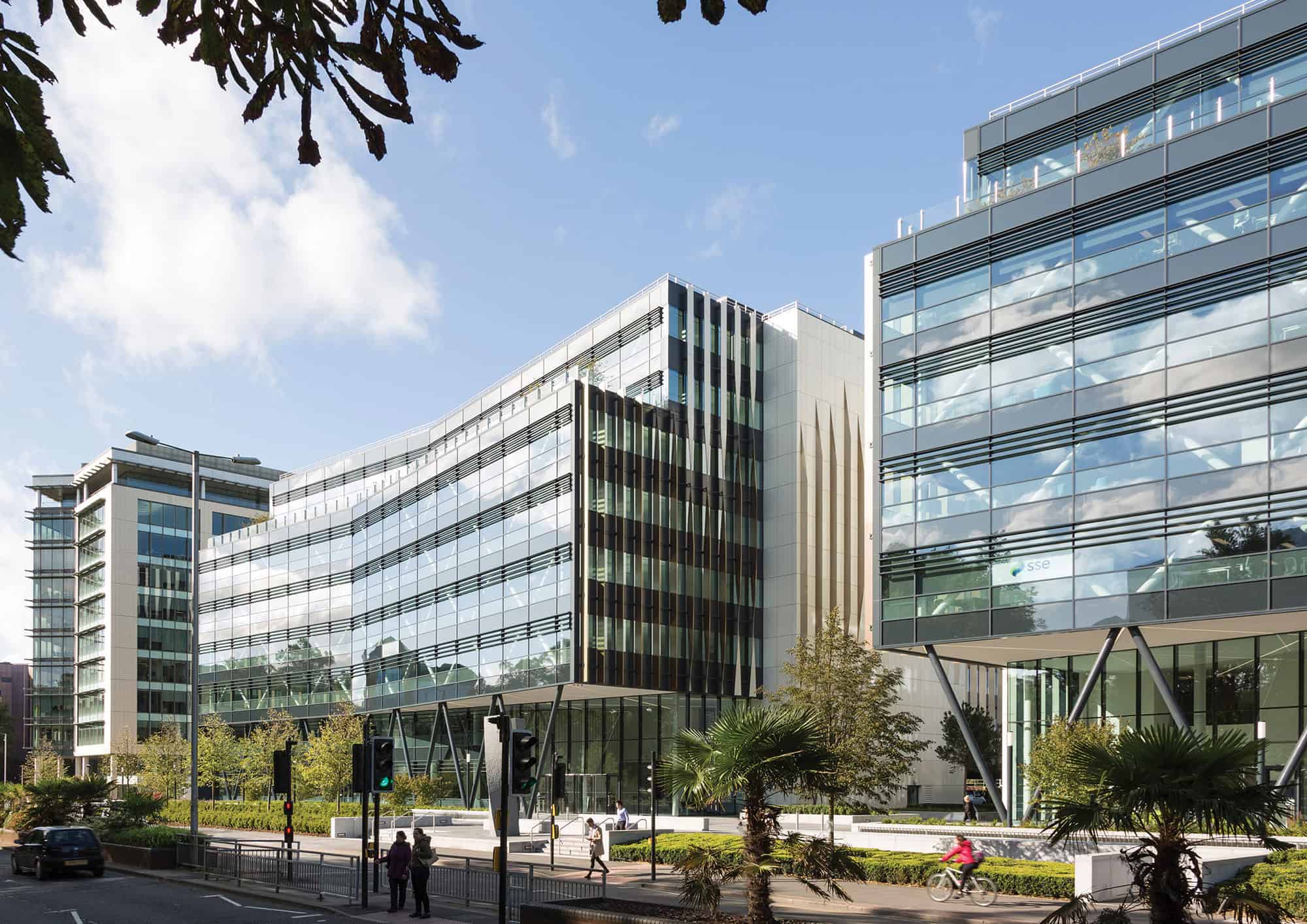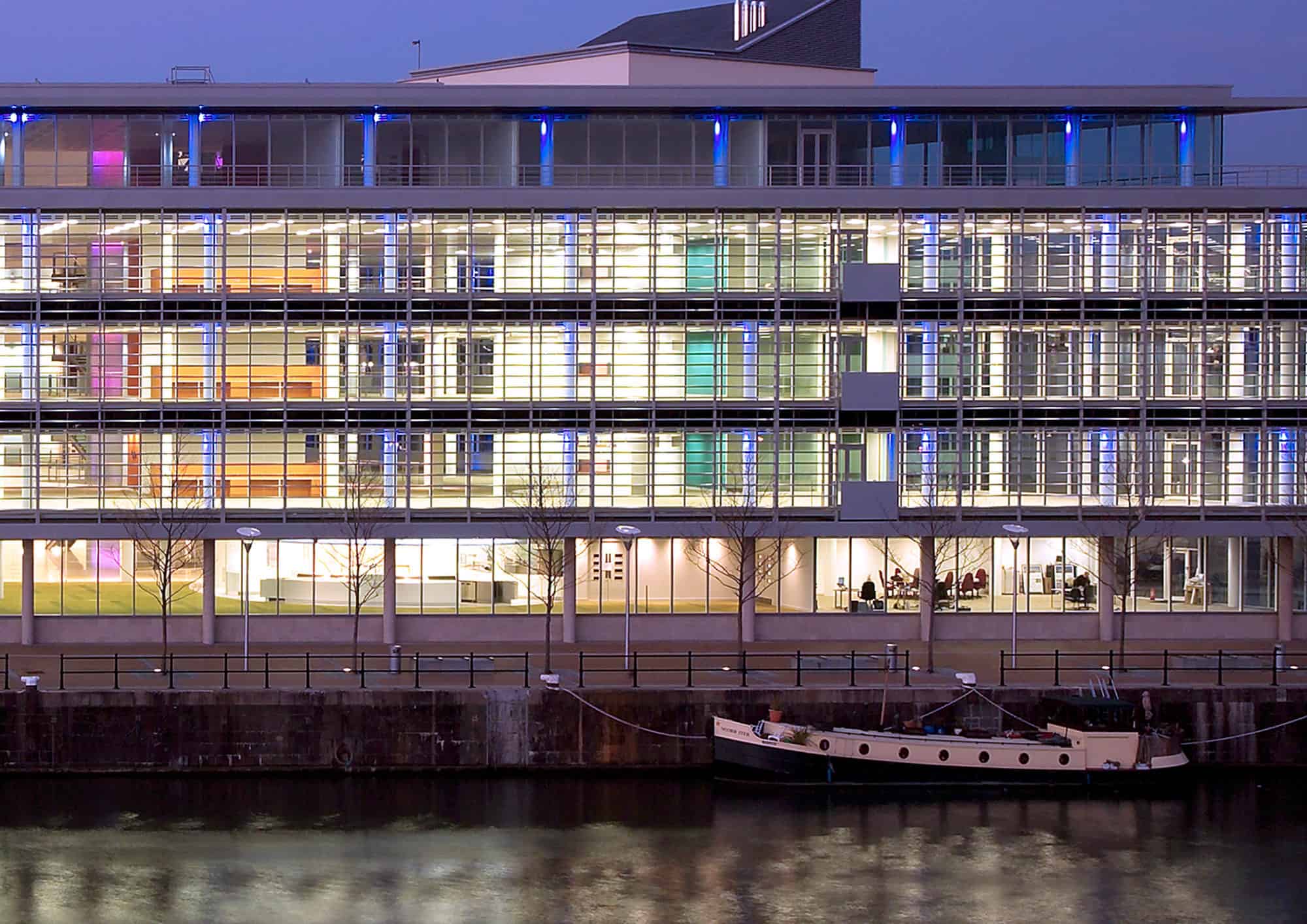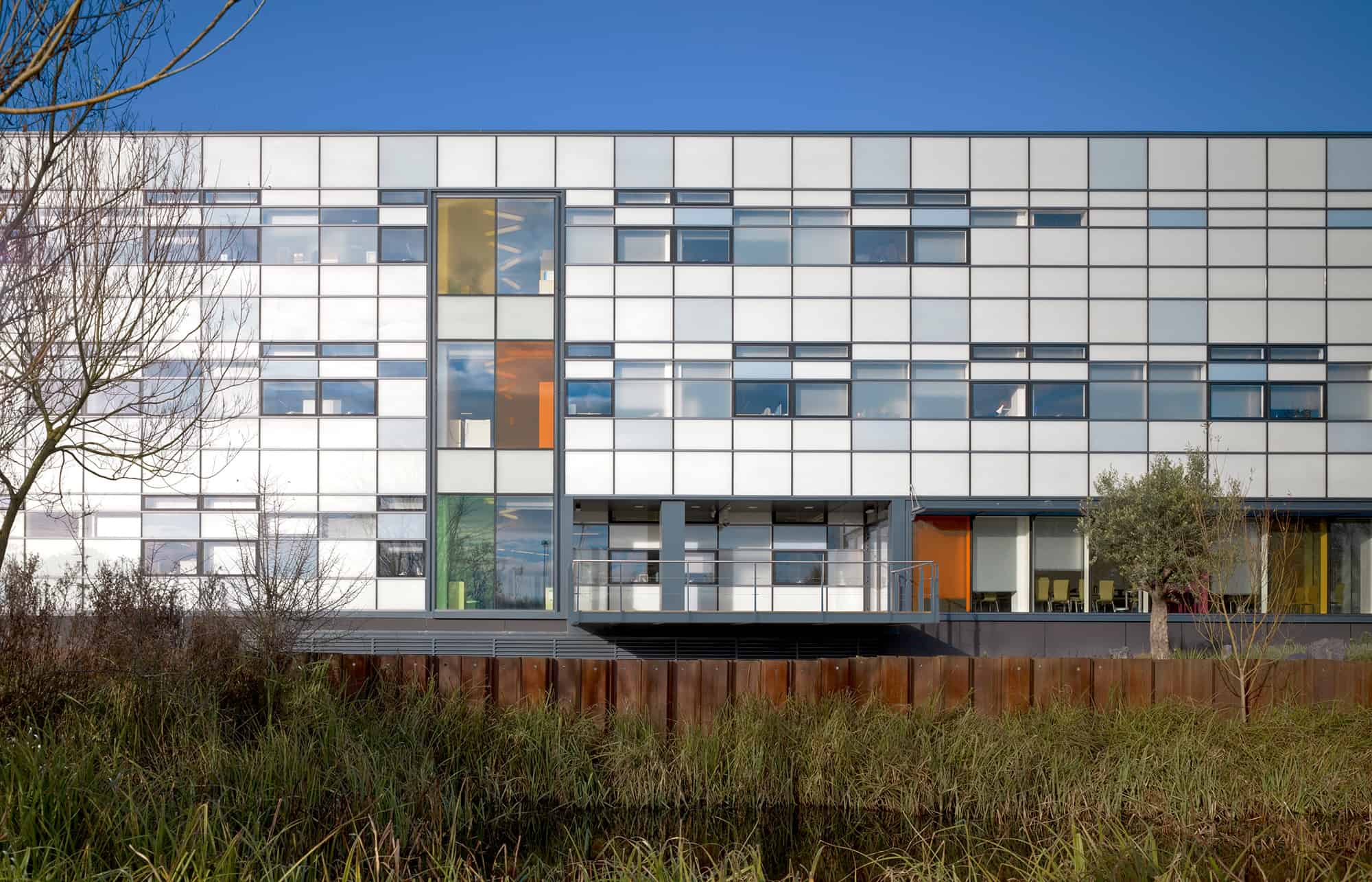Cambridge Science Park, UK
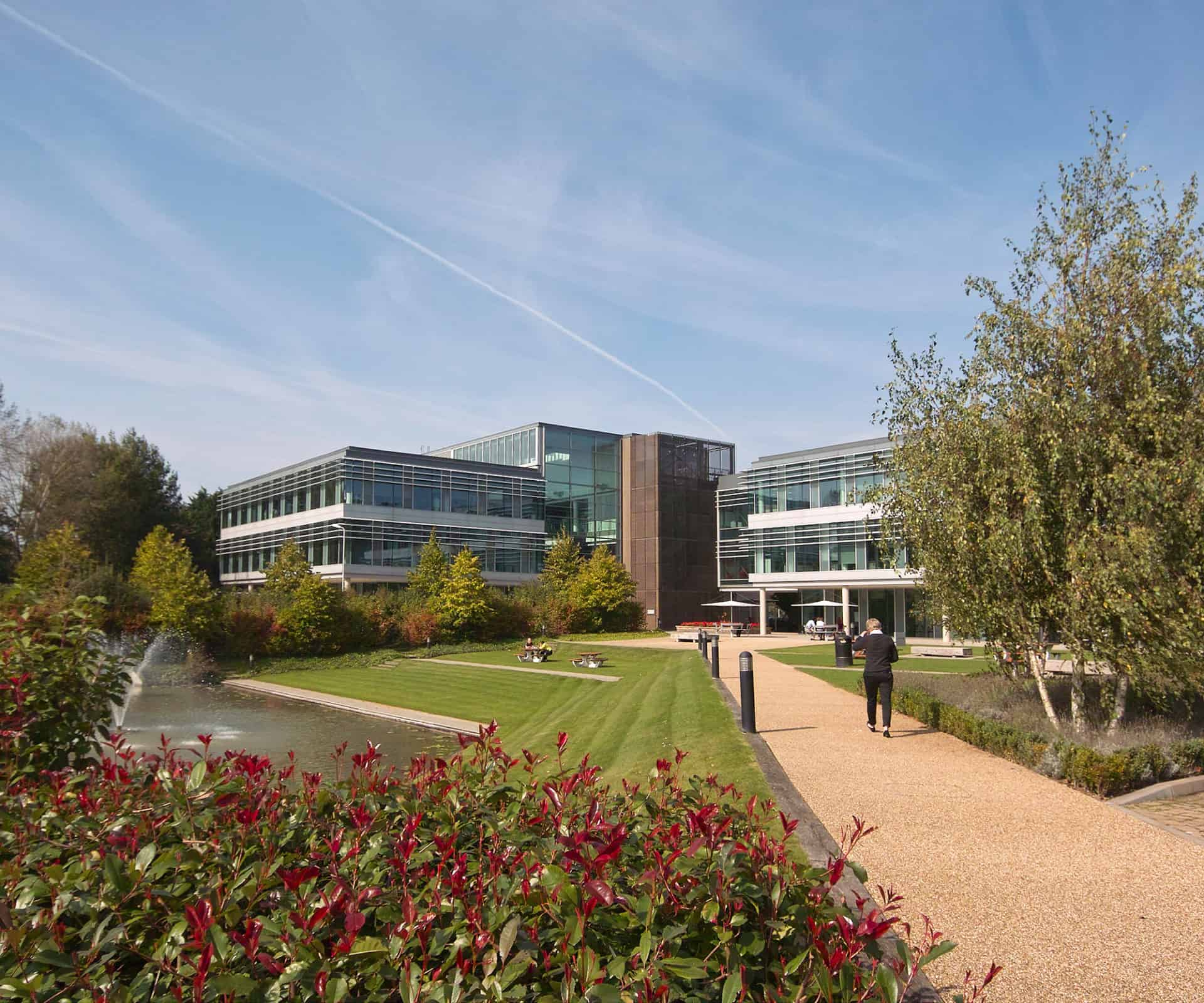
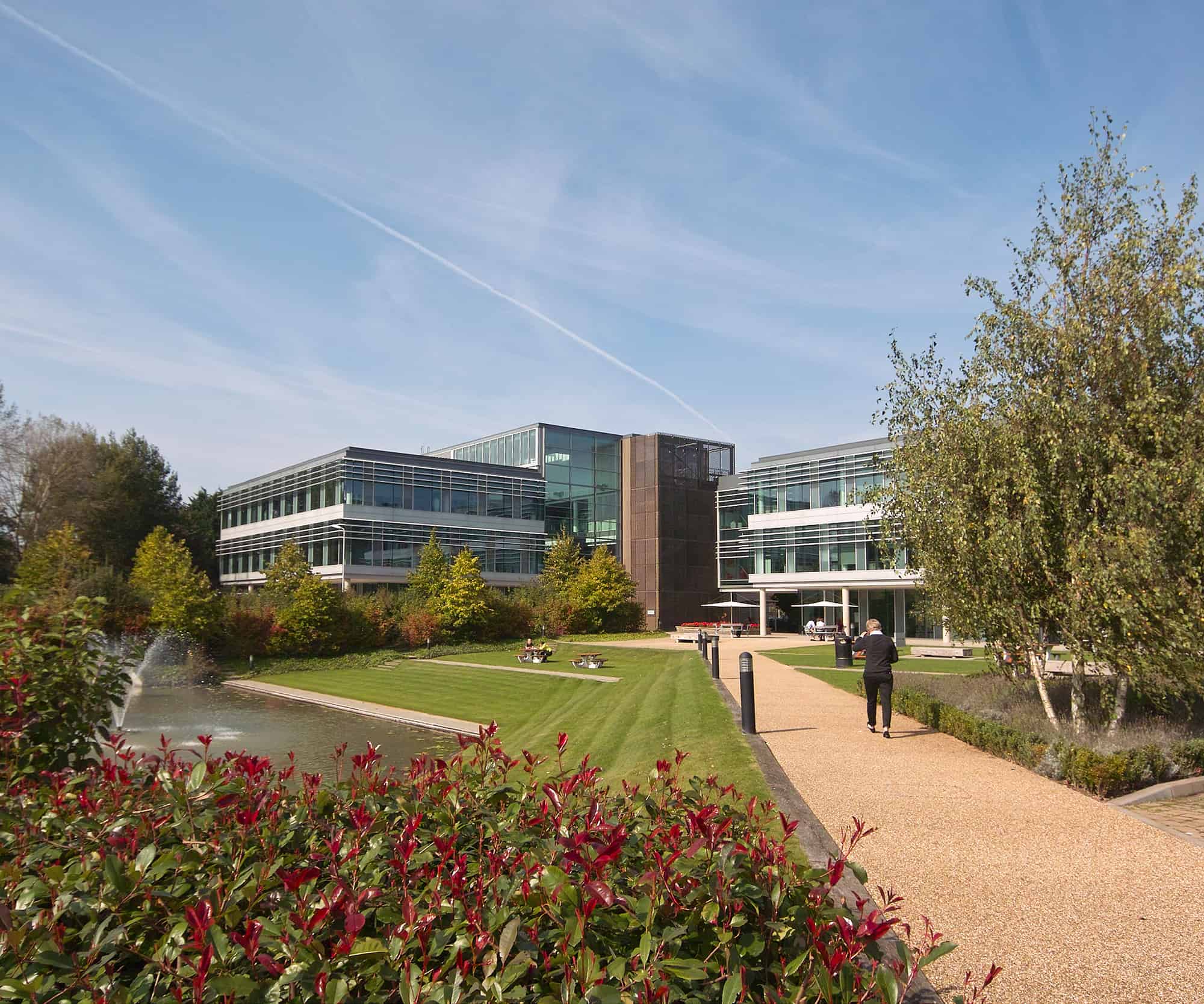
Three buildings with a full tenant fitout for Napp Pharmaceuticals which develops an existing campus on Trinity College’s Cambridge Science Park. At completion, the project was winner of the BCO Regional Award for Best Corporate Workplace
Project Details
Collective Team
We were awarded the architectural appointment to design a new headquarters building for Napp Pharmaceuticals following a design competition for Trinity College, the owner of Cambridge Science Park.
We were subsequently appointed, after competitive interview, to provide Cat B fitout interior design and space planning services for Napp Pharmaceuticals.
Our design comprises a cluster of three interlinked, three storey buildings of various sizes meeting the developer brief, commercial BCO standards, and Napp’s own organisational and spatial requirements.
The grouping of the buildings comprises a main centre-piece arrival building of 4,710sqm and two wing buildings of 3,015sqm and 3,850sqm and are set around a welcoming south facing landscaped arrival space with existing mature trees, generous relaxation areas and a balancing lake.
This arrival space is car free with just a simple drop-off space; the bulk of car parking is located to the rear, adjacent the Park boundary adjacent the A11. The buildings employ passive energy saving features in the configuration and elevational treatment.
Floor plans and individual floorplates are arranged to reflect Napp’s cultural and physical transformation from a highly cellular workplace within a mix of existing outdated buildings on the Science Park, to a more interactive and collaborative workplace environment.
Our workplace concept aimed at creating an open culture and working environment within a campus setting and aligning with Napp’s core values.
A fundamental element of our briefing was the ‘Napp Design Scrapbook’, an informal document which acted as a visual briefing tool, a scrapbook of images, photographs and statements collated by us and senior client stakeholders to capture the aspirations for a new collaborative, flexible working environment.
A need for certain cellular space, both for specific managers and ‘quiet concentration’ activities has been carefully considered to retain the open, airy workplace environment.
These cellular spaces are formed with largely glazed fronted meeting rooms, and senior manager offices. Vibrant colour, natural timber, and youthful modern furniture and fittings reflect the culture and aspirations of the client.
At completion, the project was winner of the BCO Regional Award for Best Corporate Workplace.
